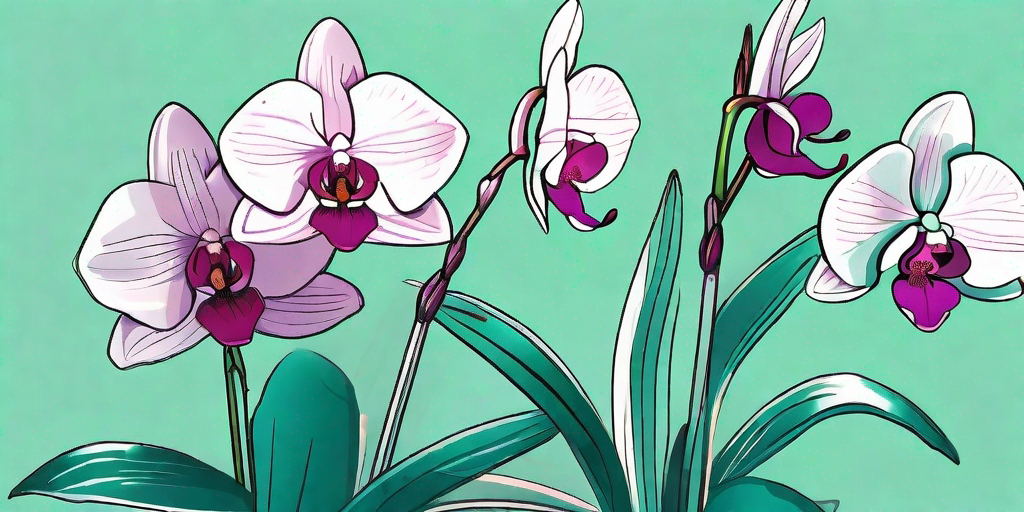
Orchids, the divas of the plant world, are notorious for their finicky nature. They demand just the right amount of light, water, and attention. But don't let their high-maintenance reputation scare you away. With a bit of knowledge and a dash of patience, you can master the art of orchid care. This guide will focus on one of the most crucial aspects of their care: light. So, buckle up, plant parents, it's time to shed some light on this topic!
Understanding the Importance of Light in Orchid Care
Before we delve into the specifics, let's take a moment to understand why light is so important for orchids. Like all plants, orchids rely on light for photosynthesis, the process by which they convert light, water, and carbon dioxide into food. Without the right amount of light, your orchid may struggle to grow and bloom.
However, not all light is created equal. The intensity, duration, and quality of light can all impact your orchid's health. Too much light can lead to sunburn (yes, plants can get sunburned too!), while too little light can result in weak, leggy growth and a lack of blooms.
Identifying Your Orchid's Light Requirements
Now that we've established the importance of light, let's talk about how to identify your orchid's specific light requirements. Not all orchids are the same, and different types require different amounts of light.
For example, Phalaenopsis orchids (also known as moth orchids) prefer low to medium light, while Cattleya and Dendrobium orchids require bright light. Knowing the type of orchid you have is the first step in providing it with the right amount of light.
How to Determine the Light Intensity Your Orchid Needs
Here's a cheeky tip: look at the leaves! The color and thickness of your orchid's leaves can give you clues about its light preferences. Orchids that prefer low light often have softer, darker green leaves, while those that thrive in bright light have thicker, lighter green leaves.
But remember, these are just general guidelines. Always research your specific orchid type to determine its exact light requirements.
Providing the Perfect Amount of Light
Now comes the fun part: providing your orchid with the perfect amount of light. This might seem daunting, but don't worry, we've got you covered!
Using Natural Light
If you're lucky enough to have a home with lots of natural light, you're in luck! Orchids generally prefer bright, indirect light. A north or east-facing window is often ideal. Just be sure to shield your orchid from direct sunlight to prevent sunburn.
If your home doesn't get a lot of natural light, don't despair. There are still plenty of ways to provide your orchid with the light it needs.
Using Artificial Light
Artificial light can be a great solution for those with less-than-ideal natural light conditions. Fluorescent lights, in particular, can provide a good spectrum of light for orchids. Just remember to keep the lights close to the plant (but not too close!) and to provide 12-16 hours of light per day.
LED grow lights are another option. They're energy-efficient and can provide a full spectrum of light. Plus, they're adjustable, so you can tailor the light intensity to your orchid's needs.
Common Mistakes and How to Avoid Them
When it comes to orchid care, a few common mistakes can make the difference between a thriving plant and a wilting one. But don't worry, we're here to help you avoid these pitfalls.
Overexposure to Direct Sunlight
While orchids do love light, direct sunlight can be too much of a good thing. Too much direct sunlight can lead to sunburned leaves, which can severely weaken your plant. Always provide your orchid with filtered or indirect light.
Not Providing Enough Light
On the flip side, not providing enough light can lead to weak, leggy growth and a lack of blooms. If your orchid isn't blooming, it might not be getting enough light.
Frequently Asked Questions
- How do I know if my orchid is getting too much light?
If your orchid's leaves are turning yellow or have a reddish tint, it might be getting too much light. Also, look for signs of sunburn, such as brown or black spots on the leaves. - How do I know if my orchid is getting too little light?
If your orchid has dark green leaves and isn't blooming, it might not be getting enough light. Also, look for signs of weak, leggy growth. - Can I use a regular desk lamp for my orchid?
While a regular desk lamp can provide some light, it might not provide the right spectrum or intensity of light that orchids need. Consider investing in a grow light for the best results.
There you have it, folks! A comprehensive guide to giving your orchids the perfect amount of light. Remember, orchid care is a labor of love, and every plant is unique. So, keep an eye on your orchid, adjust as needed, and most importantly, enjoy the process!















